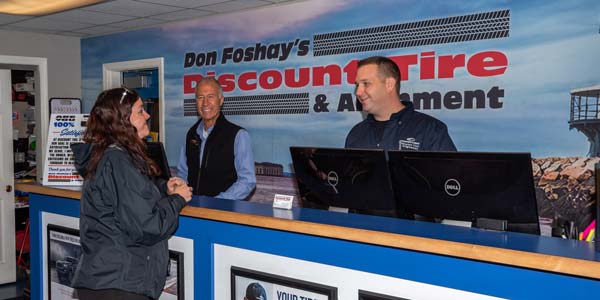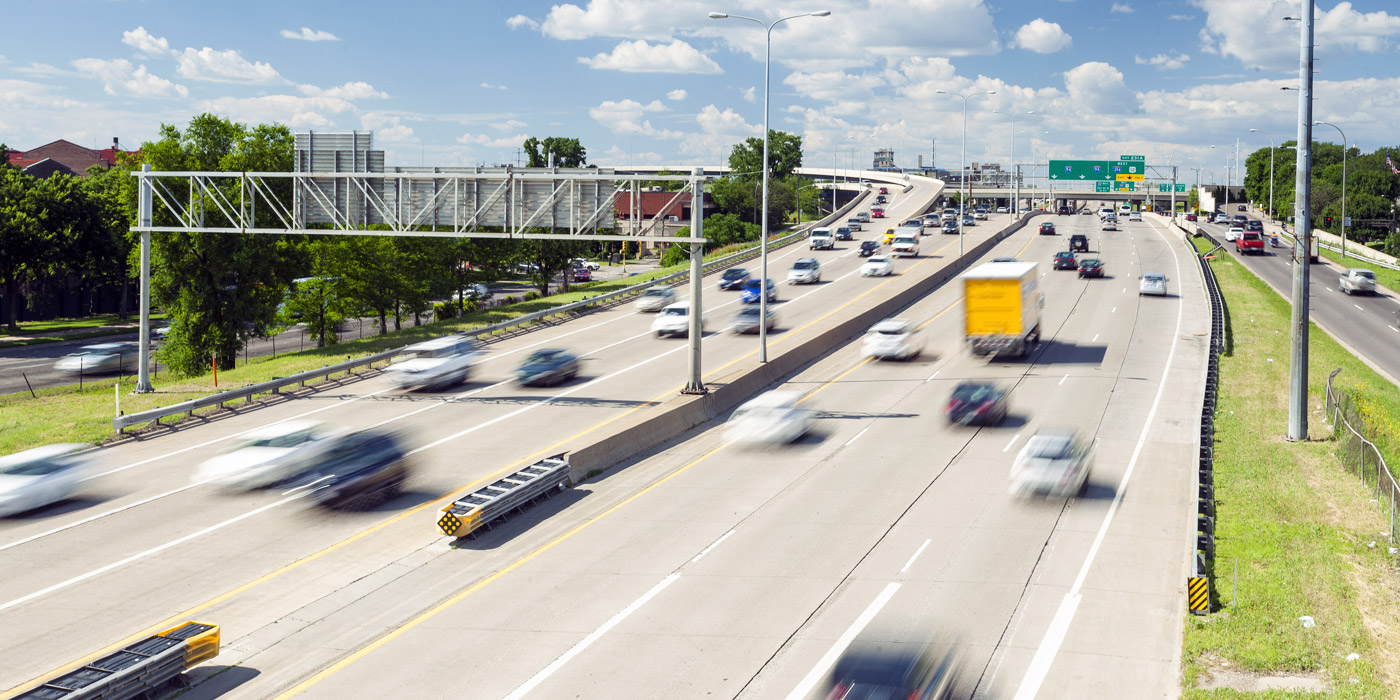
Our work suggests that the state of the automotive aftermarket industry is fairly similar to slightly more moderate relative to the same time last year. We believe macro industry drivers (gas prices, miles driven, age/complexity of vehicles) remain mostly favorable and similar to the prior year. However, unfavorable weather (cooler spring temperatures, higher levels of precipitation) remains a noticeable headwind in the industry that was slightly more pronounced in the first half of this year than last year. The negative impact from weather has been most pronounced in the seasonal categories (HVAC/coolants) with a more noticeable decline in demand through the spring season and first half of the year.
The inflationary environment appears more elevated in the first half of 2019 (north of 1%) relative to the first half of 2018 (below 1%) due to rising inflationary costs in key areas like payroll/wages, healthcare, transportation and tariffs. Aftermarket parts retailers — like AutoZone, O’Reilly’s and Advance Auto — have been able to absorb these costs and pass them through to automotive repair shops and DIY customers at a higher rate this year which has been beneficial for them in driving higher average pricing (due to the inelastic nature of most aftermarket parts, particularly failure items). For parts suppliers, demand from automotive repair shops has been relatively more stable (relative to do-it-yourselfers) but not immune to weather-related softness, which is consistent with the prior year. Repair shops seem to be getting an even more substantial boost from pricing given the relative inelasticity of hard parts — or parts that typically fail or wear on a vehicle —compared to more discretionary items, such as wiper blades, oil, lubricants and filters. This trend is helping drive higher average pricing (complexity of parts and inflation pass-through) and stronger traffic to parts suppliers, which translates to dealers and repair shops making more on a part or service than last year. Unfavorable weather, pressures on lower-income discretionary spending and advanced vehicle technology (harder for DIYers to tackle) continue to be notable headwinds that are impacting the DIY sector yet seem to give an edge to repair shops across the country, many of which offer consumer financing options and the expertise to get automotive repair work done quickly and accurately.
Repair shops seem to be getting an even more substantial boost from pricing given the relative inelasticity of hard parts, or parts that typically fail or wear on a vehicle, compared to more discretionary items, such as wiper blades, oil, lubricants and filters.
Outlook for 2019
We expect more of the same in regard to sales of non-failure-related products, or discretionary items such as wash and wax, and DIY trends in the second half of 2019. While weather remains an uncertain variable in our second-half outlook, incremental pressure on the lower-income consumer from ongoing inflationary pressures and increased complexity of parts are likely to remain tailwinds for repair shops and dealers. We view the DIY segment as a flattish growth business over the medium-term that continues to see traffic headwinds offset by higher average pricing with aftermarket parts retailers (inflation pass-through). Over the next few years, we expect to see negative traffic on the DIY side and positive growth in business for dealers. The DIY segment appears to be highly impacted by weather trends (people defer repairs in their driveways when the weather is bad), so in periods of unfavorable weather, we would expect to see pressures on growth rates and traffic and the opposite in periods of more favorable weather.
We see some potential for improved industry demand into the remaining summer months as weather patterns have shifted more positively recently with the arrival of warmer, seasonal temperatures. Consistent, sustainable heat throughout the balance of the summer would be a welcomed positive catalyst that likely drives incremental parts failure, and therefore, more vehicle repair and service demand. The step-up in industry demand could be partly muted by difficult comparisons from the prior year as the industry experienced favorable weather in the second half of last year with a hot summer through 3Q and much colder temperatures throughout most of 4Q (November last year was one of the coldest on record).
Tariffs
Tariff activity has been ongoing since last year. The first two rounds of Section 301 tariffs were less impactful for the automotive aftermarket since they were more concentrated on certain components and not full product lines. Tariffs on the third list of Section 301 tariffs (initially 10%) arrived in the fall last year and had a bigger impact on the industry as List 3 essentially expanded the tariff impact to most product lines coming out of China. Tires and tire-related products as well as a laundry list of automotive products including engine parts, transmission belts, transmission shafts and cranks, gearboxes, rearview mirrors, bumpers, seatbelts, brakes and various other vehicle components, were part of the third list of Section 301 tariffs. The impact of tariffs on these items grew more severe in May of this year as President Donald Trump’s Administration increased the tariff rate from 10% to 25%. Initial pass-through on List 3 at 10% appeared less combative between aftermarket parts retailers and suppliers as both shared in the higher costs amicably. Because of this, we expect to see an additional inflationary pass-through to dealers, and then to consumers; however, both parts retailers and suppliers will look to mitigate some of the tariff costs so that consumers won’t pay the full extent of the tariff increase.
Our work suggests the aftermarket parts retailers may likely press on suppliers more this time around with the move to 25% given the magnitude of the incremental costs and willingness to accept the initial price increases (related to the 10% tariff) more favorably since many didn’t consider that tariff levels could increase substantially higher (the industry was caught a little off guard by the move to 25%). There is also concern that low-end consumers are already dealing with higher inflationary levels across many consumer goods and that continued price increases across the consumer landscape could potentially lead to more than normal deferred maintenance/repair spending. This concern on unit growth is likely partially offset by increased selling pricing as ongoing inflationary pass-through is expected to remain a tailwind for average transactions through the balance of the year, with more expected price increases from parts suppliers, related to the increase to 25% tariffs, scheduled through the back-half of the year as products are purchased.
For dealers and other vehicle service providers, the growing useful age of parts has led to increased traffic since aftermarket parts retailers and DIYers may lack the knowledge and technical expertise to properly replace these more sophisticated parts.
Competition & E-Commerce
As we look long-term, higher pricing is something industry participants will be watching related to the product SKUs/lines that have more direct overlap with Walmart and/or online competitors like Amazon. The aftermarket pricing relative to these channels is already significantly higher, but to date, it has been mostly offset by higher service levels, technical salespeople and a greater breadth of product in the aftermarket. Dealers need to get product quickly, and most parts retailers offer quick same-day delivery and can get parts to shops in just a few hours. E-commerce platforms like Amazon and larger brick-and-mortar operations like Walmart either do not compete here or have been struggling to compete on that front. We continue to monitor this impact particularly as pricing transparency grows at the consumer level.
Increasing Age of Parts
The growing useful age of parts has been a tailwind for dealers yet a headwind for the aftermarket parts retailers as it has stretched out the replacement cycle for many parts. For dealers and other vehicle service providers, this has led to increased traffic since aftermarket parts retailers and DIYers may lack the knowledge and technical expertise to properly replace these more sophisticated parts. For parts retailers, an extended replacement cycle has been partly offset by higher pricing as the improved quality of these parts has commanded higher price points. There has also been some indirect impact from this which has likely proved beneficial for the larger industry parts retailers like AutoZone, O’Reillys, Advance and NAPA. With SKU proliferation, the need to carry a broader assortment of parts has increased along with the working capital requirements to finance a larger inventory assortment. Smaller parts retailers in the industry have struggled to be competitive in carrying the breadth of assortment needed to fully compete with the larger players resulting in market consolidation either via acquisition or smaller players closing/exiting the marketplace.
Stretched out replacement cycles and improved quality of parts likely remain a headwind over the next five years for the automotive aftermarket. Although, this is likely partly mitigated by favorability from the car parc, which should be turning more positive as we go extend further beyond from the recession. The next 10 to 12 years out from the 2008-2010 recession should be a favorable dynamic as more cars enter the “sweet spot” for repair.
Tax Laws
At the end of 2017, President Trump signed the Tax Cuts and Jobs Act, which cuts individual income tax rates, doubles the standard deduction and eliminates personal exemptions. The change in tax law was expected to have a positive impact on the automotive aftermarket this year heading into the new year but proved to be more of an actual headwind for the space.
The changes this tax law brought affected both dealers and parts suppliers. Customers typically rely on their tax reimbursement, which didn’t happen for the most part. This led to consumers pinching pennies in the first few months of the year to save for that necessary repair order or purchase, or even putting it off, maybe indefinitely.
There was also an expectation that the lower-income consumer should see a larger return this year (versus last year) from changes in the Child Tax Credit (increased from $1,000 to $2,000 per child for 2018). However, earlier in the year, the IRS indicated that taxpayers who claim the EITC (earned income tax credit) or ACTC (additional child tax credit) would likely experience a refund hold due to a delay in processing. In addition, many consumers did not realize that their withholdings in their paychecks were adjusted for the lower tax rates which resulted in lower average refunds relative to the prior year and fewer refunds in aggregate. The impact on any future years will be dependent on any potential tax law changes and/or delays in processing returns.














